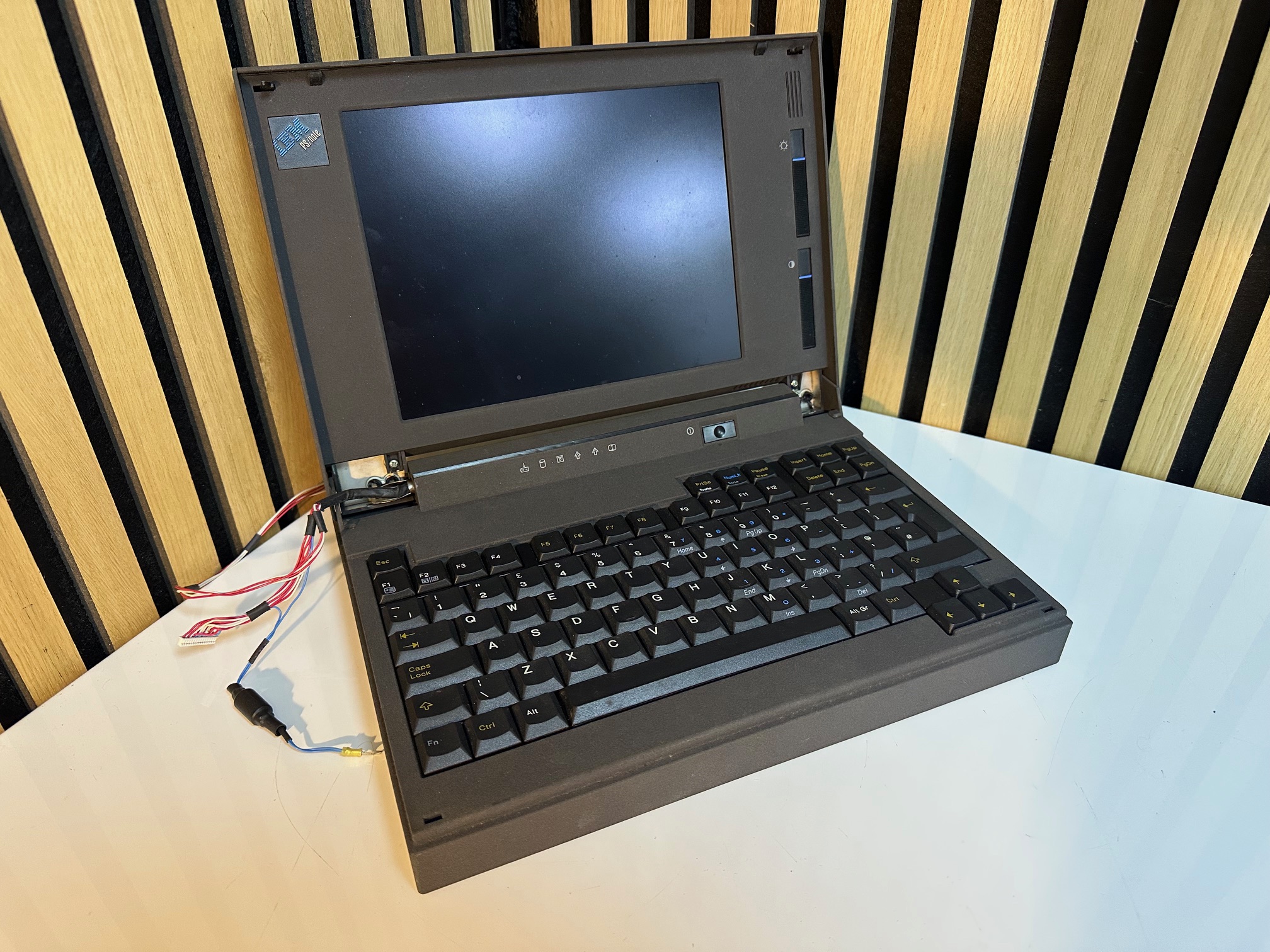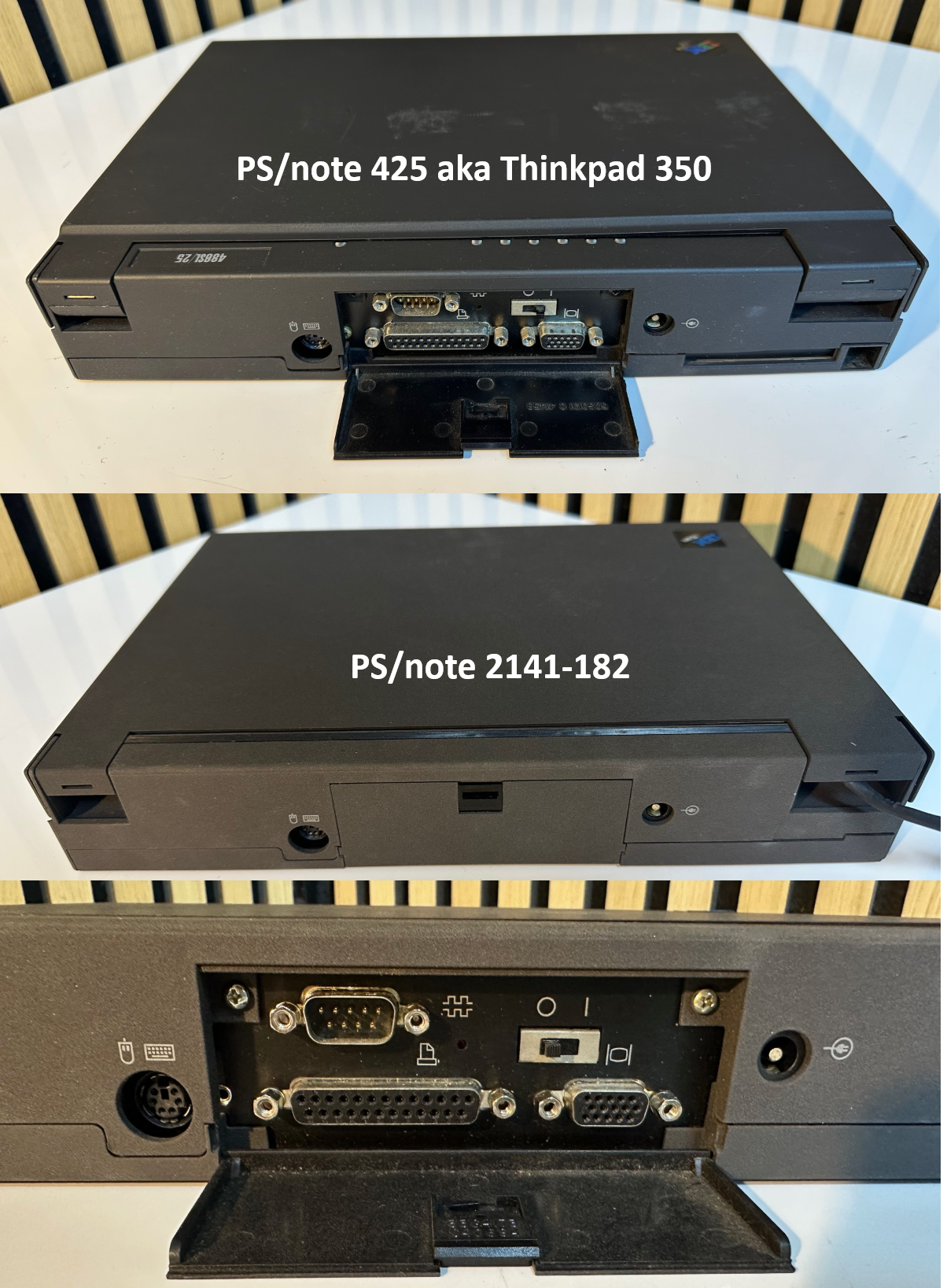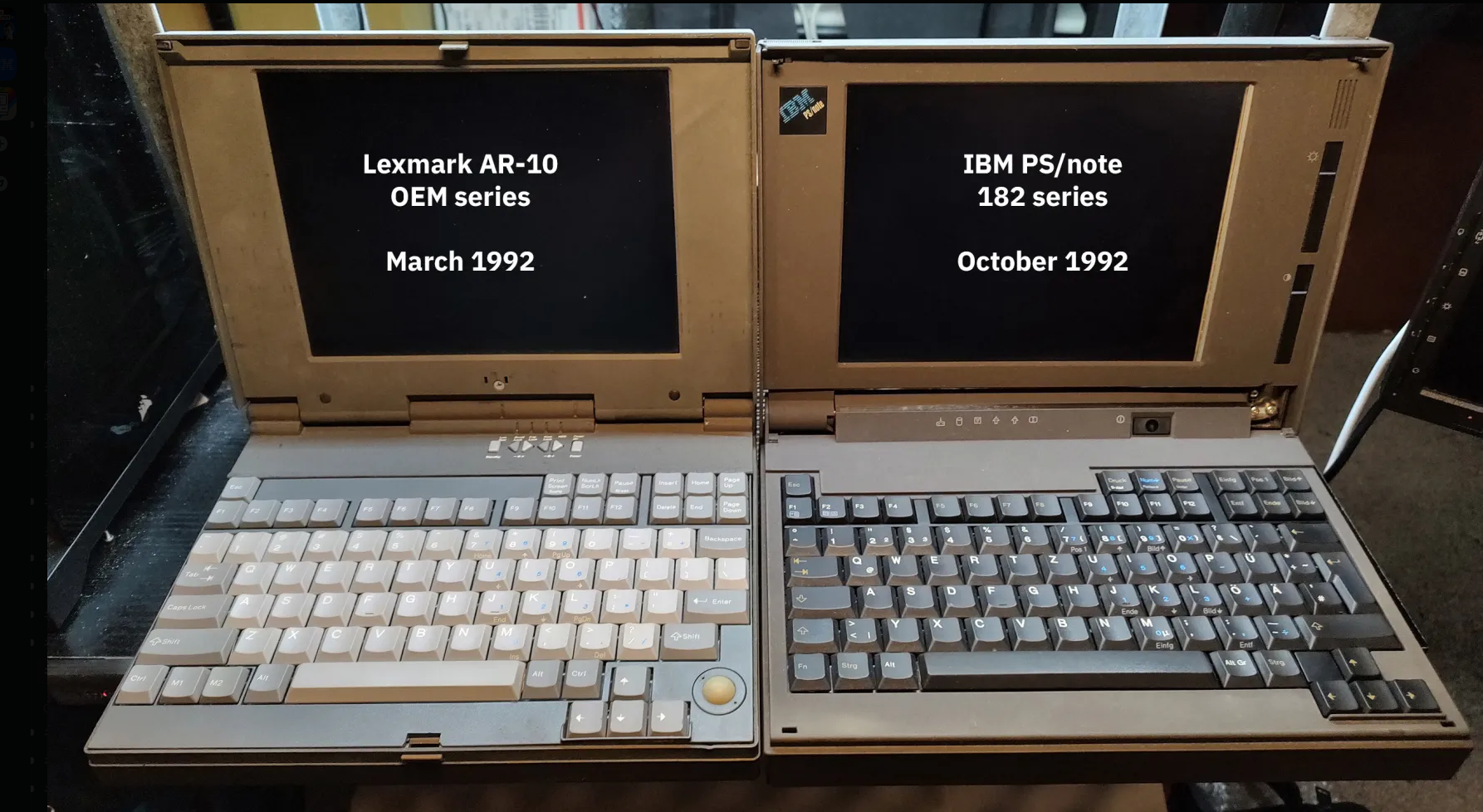This rather unusual US-designed PS/note feels like an experiment in case and PCB design. It has it's own unique design flairs, badge, internals and case. This was in a world where the US and Japan were each competing for IBM's value range of notebooks which were entirely distinct from the high-end business Thinkpad 700-series.
Most of these models were 25Mhz 386SL machines although there was a 386SX variant too. They came with 2Mb RAM, upgradable to 10Mb, and 85Mb 2.5" IDE hard drive and a 640x480 64-Greyscale passice LCD.
Spot the (almost) entirely unique square case badge, which some have attributed the style to alignment with IBM's PS/1 value desktop range. It's somewhat confusing because the original Japanese PS/55 note shares a similar name (and badged as simply a note) and indeed a lot of machines are also PS/notes with a suffix of it's specific model to provide easy referencing (in the West alone you had the PS/2 note N33sx, N51sx/slc, PS/note 425, a PS/note 45SL). It's like a team within IBM were trying to restart the note brand to the West by saying 'here is THE note'.
This type of case badge was only seen also in the probably unrelated PS/note N45SL design by Zenith, which became the Thinkpad 300.
As a result most people refer to this as the note 182.

I have to say, this is another tough machine to love. I have yet to see a working one and I'm not entirely sure why. Whilst the internal hibernation batteries regularly cause a lot of internal corrosion and are likely damaging microscopic components on the PCB, one of my machines does not suffer from internal corrosion. There is only one, large 330uf surface mounted electrolytic capacitor which doesn't tend to leak, but replacing this cap does not allow the machine to boot. I cannot spot any fuses on the internal PCB and the rest of the capacitors are solid-state tantalums (which tend to fail very visibly in an explosive short). It's possible my unique external power supply, specifically for this machine is the problem. I'm past caring all that much because this machine is likely to be a little disappointing.
The plastic ingredients of the case have become extremely brittle due to an imperfect plastic chemical makeup - it will literally split and break with normal movement. What is also unusual is that the case has been coated in a -somewhat- vinyl paint which you can peel off like a skin. The colour of this paint is almost exactly the same colour as the plastic below, so it's either been added to provide a different texture or perhaps it absorbs RF. Either way it feels like an experiment.
My understanding of how this machine came about is perhaps within a world of competing 'labs' of IBM Japan, USA and external partners Zenith. In this case we have a USA developed machine, branded as a note competing for IBM 'value' customers - which were also being given the Japanese low-end PS/55 notes. As the low-end Japanese PS/55 M23V and C23V (as opposed to the high-end C52 / 700C) notes evolved into the Thinkpad 330, this US-designed PS/note 2141-182 and PS/note 425 became the Thinkpad 350. As previously mentioned Zenith were making the PS/note N45SL as well to become the 300.
I'm going to quote @Thinkdan rather than steal his expert knowledge with some more trivia:
"the 23- on plastic mouldings (IBM Raleigh), ignoring the Q4 prefix to the serial number the 55 indicates IBM Greenock, and the label states 'Made in UK'. 'Plant R2' on the sticker on the underside of the keyboard (I presume) looks like a Lexington/Lexmark code. Even when assembled in the UK, the Model M keyboards always had unique labelling, with things like day of manufacture rather than just year-month and a completely different style of label from anything else that came out of Greenock. I do regret that I never got to see the keyboard assembly area when I worked there..."
and
"I have vague recollections that the PS/Note 182 - type 2141, sometimes referred to by IBM as PS/1 Note (but I don't recall seeing it badged as such) was an IBM Raleigh design, but it also bizarrely is the only other ThinkPad to share the weird grey fleck case paint with the 300, made by Zenith. It sits in the timeline of PS/1 design/development being transferred from Boca Raton to Raleigh, and Raleigh had form with notebook development with the ThinkPads 500, 510, and 701"
At the time, we must remember that in different places and moments, IBM were working with Zenith and IBM's newly formed stepchildren at Lexmark, alongside their own distinct engineers. Ideas and designs seemed to be shared in a bit of a free-for-all from all sorts of places. The 182 feels very cheap. Not quite as bad as the Zenith 300 build, but somewhat close. Having said that, it's very much built by IBM as confirmed by the writing on the bottom ("Manufactured By IBM") and the silkscreen printing of IBM on the motherboard. It certainly shares a lot of design similarities in design with the 'value' PS/note 425/Thinkpad 350 of which share the same brittle kind of plastic leading to lid/hinge failure. The ports and screw design on the rear are exactly the same as the ps/note 425/Thinkpad 350
Bear in mind on my 182, the front plastic hinge covers of the screen bezel have snapped off due to the bad plastic which makes it looks like ther eise is a bigger empty space in the hinge area that wouldn't have existed in the original:

Eventually, IBM somewhat sacked off the Japanese and US designs of the evolved Thinkpad 330 and Thinkpad 350 and restarted the whole consumer range of Thinkpads with the cost-reduced version of the 755 - the Thinkpad 360 and the ground-up designed 'cheap' Thinkpad 340.
Extra tit bit - here is it's patent: https://patents.google.com/patent/USD346592S/en
And here is a picture taken by @AdmiralShark showing how the Lexmark AR-10 notebook bares some striking similarities to the PS/note 182:

